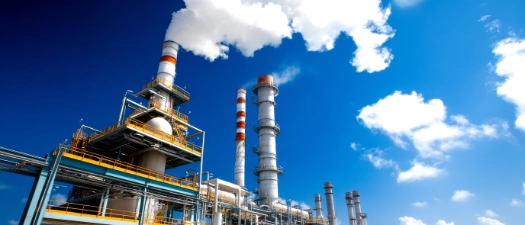by Kaleb Ten Haken and Mitch Lund
How is Bread Made?
There’s more to making bread than just flour, yeast, and water! Before the dough even hits the oven, each step of the process — from measuring and mixing to fermentation — plays a critical role in determining the quality of the final loaf. Precision in handling raw materials directly impacts consistency, flavor, and appearance.
How Does Precision Handling Affect The Bakery Process?
Precision handling affects every aspect of the baking process. Measuring, temperature, fermentation, shaping, proofing, and precise timing are all contributing factors that can affect the outcome of your bakery production — and precision handling impacts each and every step! Continue reading to learn more about this important aspect that can help boost the efficiency of the bakery industry.
Measuring: Where Precision Begins
Properly measured ingredients and mixing cannot be overstated. For example, flour and water balance is critical — too much or too little of either will make a bad batch of bread. Properly mixing the ingredients ensures that the flour is fully hydrated, the yeast is evenly distributed, and the dough develops the right structure and texture. This process helps to create a uniform crumb, enhances the bread’s flavor, and improves its overall quality. Additionally, thorough mixing activates the gluten proteins in the flour, which gives the bread its elasticity and chewiness. Taking the time to mix the ingredients well is a crucial step in baking bread that is both delicious and visually appealing.
Temperature: A Delicate Balance
Moreover, it’s important to consider the temperature of the ingredients and the environment in which you’re mixing. Warmer temperatures can accelerate yeast activity, potentially leading to over-proofing, while cooler temperatures can slow down the process, affecting the dough’s rise. Using a kitchen thermometer can help ensure that your ingredients are at the optimal temperature for mixing.
Fermentation: Where Flavor Takes Shape
Once the dough is thoroughly mixed, allowing it to rest and rise is equally important. This resting period, known as fermentation, allows the yeast to produce carbon dioxide, which causes the dough to expand and develop flavor. During this time, the gluten network continues to strengthen, making the dough easier to shape and resulting in a better final product.
Shaping: Crafting Structure and Style
After the initial rise, the dough is often punched down to release excess gas and then shaped into loaves or rolls. Shaping the dough correctly contributes to the bread’s final appearance and texture. It’s also an opportunity to add any extra ingredients, like seeds or herbs, that can enhance the bread’s flavor and visual appeal.
Proofing: The Final Rise to Perfection
Finally, the dough undergoes a second rise, or proofing, before baking. This step is crucial for developing the bread’s final volume and texture. Proper proofing ensures that the bread will have a light, airy crumb and a beautiful, golden crust.
Timing: The Final Touch
Baking the bread at the right temperature and time is the final key to success. The oven’s heat causes the dough to rise rapidly in the first few minutes of baking, known as “oven spring,” and then the crust begins to form. A well-baked loaf should sound hollow when tapped on the bottom and have a rich, even color.
How HaF Can Help!
At HaF Equipment, we understand that producing a quality product starts long before the oven. Our custom solutions are designed to deliver accuracy and consistency in raw ingredient handling, helping bakeries of all sizes streamline their operations.
From Dust Collectors, Filter Receivers, or complete system integration, HaF is ready to connect!
About HaF
HaF Equipment designs turnkey systems for projects of all sizes. Our team understands our customers’ concerns and takes the time to listen, develop a plan, and communicate along the way. If you need someone you can trust and want to eliminate the stress of managing the details of your next project, HaF is Ready To Connect.
CONTACT US today to discuss your next project and how our team can help.
About The Authors
Kaleb TenHaken
Kaleb TenHaken has been with HaFSBX for over seven years, bringing a strong foundation in mechanical engineering from Iowa State University. He began his career as a mechanical design engineer, where he quickly developed a passion for customer interaction and project execution.
Over the years, Kaleb has played a key role in the development and implementation of projects across the bakery industry. His ability to bridge technical expertise with customer-centric solutions has made him a trusted partner for many of HaFSBX’s top bakery clients.
Mitch Lund
Mitch Lund has been working for HaF Equipment for more than 3 years. He is the Vice President of the Dry Scrubber Users Association (DSUA) and has been serving in the industry for over 12 years. He received his Bachelor of Science in Chemical Engineering. Mitch leads business development efforts for HaFSBX in the baking and snack sectors. He has been in ingredient handling for 13 years and can be easily found at many of the industry trade associations HaF actively supports, including ABA, BEMA, and ASB. Mitch is a graduate of the University of Minnesota’s Chemical Engineering program and is passionate about helping customers in the baking industry grow and improve their business.




